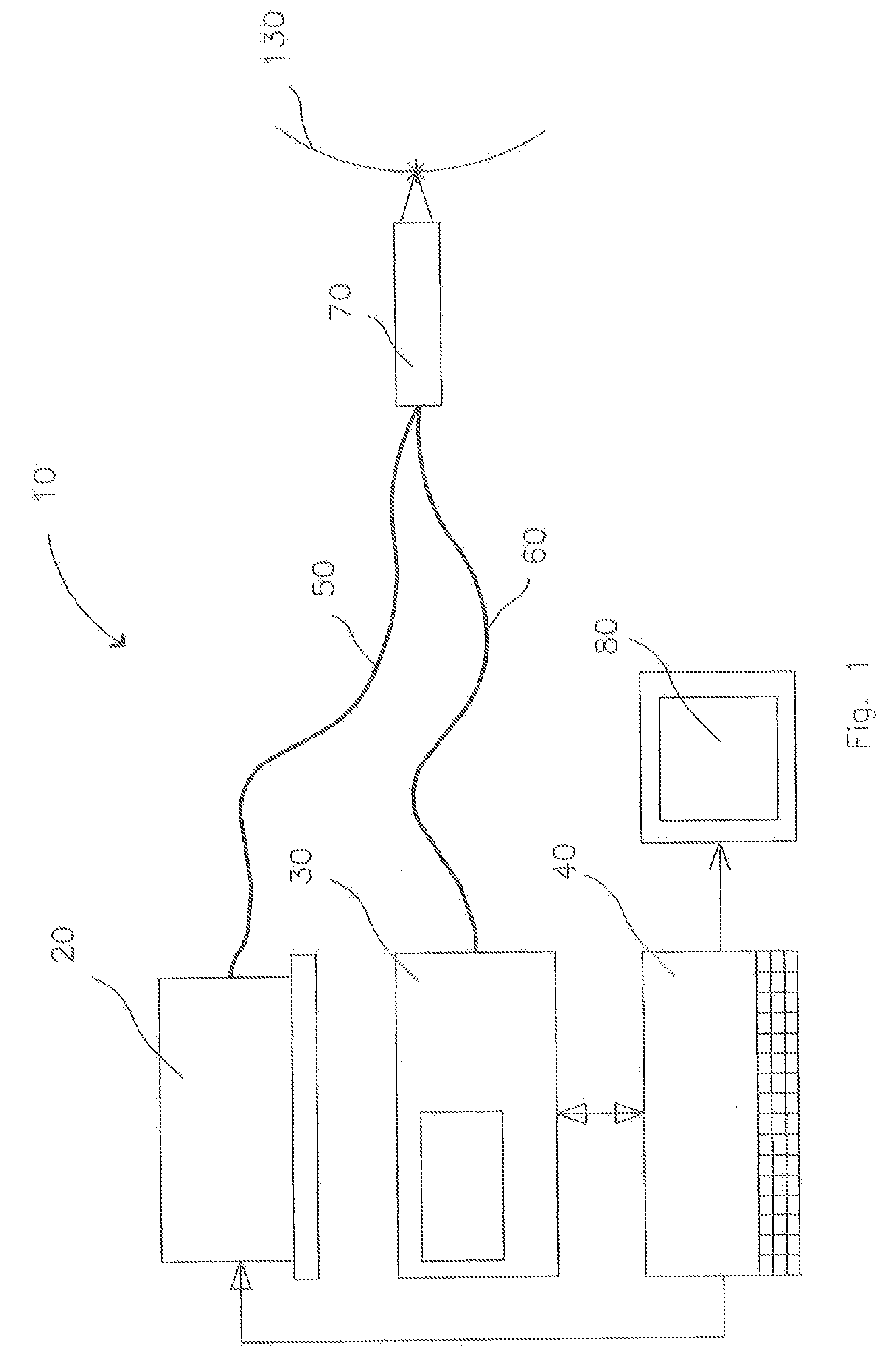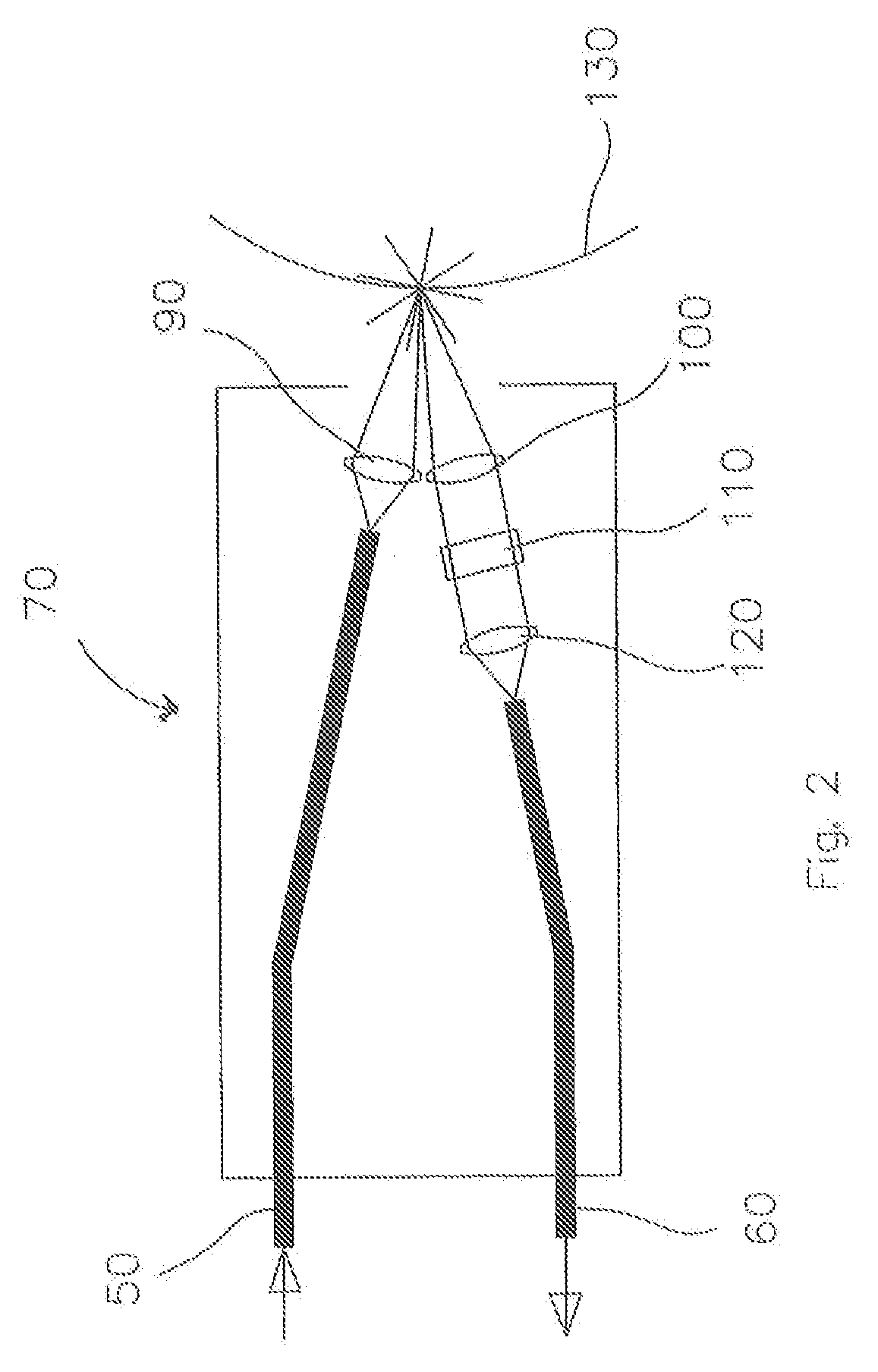Medical Device For Diagnosing and Treating Anomalous Tissue and Method for Doing the Same
a medical device and anomalous tissue technology, applied in the field of medical devices for diagnosing and treating anomalous tissue and methods for doing the same, can solve the problems of cosmetic damage, unnecessary tissue removal, affecting the accuracy of analysis,
- Summary
- Abstract
- Description
- Claims
- Application Information
AI Technical Summary
Benefits of technology
Problems solved by technology
Method used
Image
Examples
third embodiment
[0038]a probe for use with medical device 10 is shown in FIG. 7. In this embodiment, no focusing optics in or out of the distal end of the probe 270 are used. Protective window 200, described above, is shown as easily replaceable, optionally disposable, and is incorporated into this embodiment.
fourth embodiment
[0039]a probe for use with medical device 10 is shown in FIG. 8. Probe 370 comprises a single conduit 380 that can deliver excitation / ablation energy to target tissue 130 and a lens 390 to focus the energy. In addition, the same conduit 380 can collect the scatter through the same probe 370 and deliver the scatter to the sensor (not shown). Probe 370 can also comprise inert gas catheter 400 that can deliver positive pressure air, nitrogen or other inert gas through hole 410 in the distal end of probe 370. The positive pressure gas blowing through inert gas catheter 400 can protect the contents of probe 370 from debris. As used herein, “debris” is anything resulting from the ablation of the tissue, such as a plume of smoke, blood, ablated tissue remains, and other bodily fluid.
fifth embodiment
[0040]a probe for use with medical device 10 is shown in FIGS. 9A and 9B. Probe 470 comprises hollow articulating arm 480 such as that used to carry near infrared, carbon dioxide laser emissions from energy source 20 (not shown). FIG. 9A illustrates the entire distal end of articulating arm 480. Adjacent to articulating arm 480 run excitation conduit 490 and sensing conduit 60. A diagnostic excitation beam is delivered to target tissue 130 through excitation conduit 490 from energy source 20 (not shown) or a separate energy source as desired or required. Sensing conduit 60 performs as described above. FIG. 9B is an exploded view of the very distal end of probe 470, showing aiming device 500 used to aid in directing the ablation energy from the carbon dioxide laser to target tissue 130.
[0041]It is contemplated that other useful devices may be incorporated into the probe embodiments as desired or required. For example, a vacuum removal tube can be configured to remove debris from the ...
PUM
 Login to View More
Login to View More Abstract
Description
Claims
Application Information
 Login to View More
Login to View More - R&D
- Intellectual Property
- Life Sciences
- Materials
- Tech Scout
- Unparalleled Data Quality
- Higher Quality Content
- 60% Fewer Hallucinations
Browse by: Latest US Patents, China's latest patents, Technical Efficacy Thesaurus, Application Domain, Technology Topic, Popular Technical Reports.
© 2025 PatSnap. All rights reserved.Legal|Privacy policy|Modern Slavery Act Transparency Statement|Sitemap|About US| Contact US: help@patsnap.com



